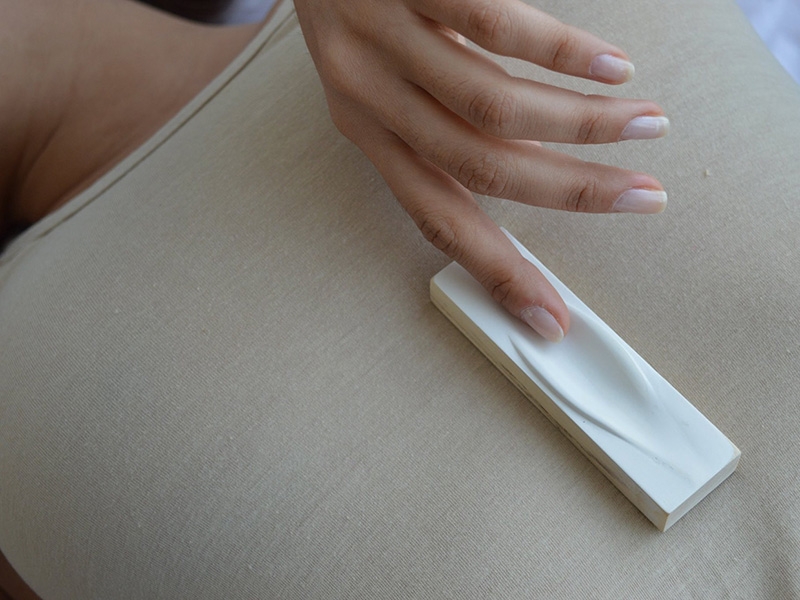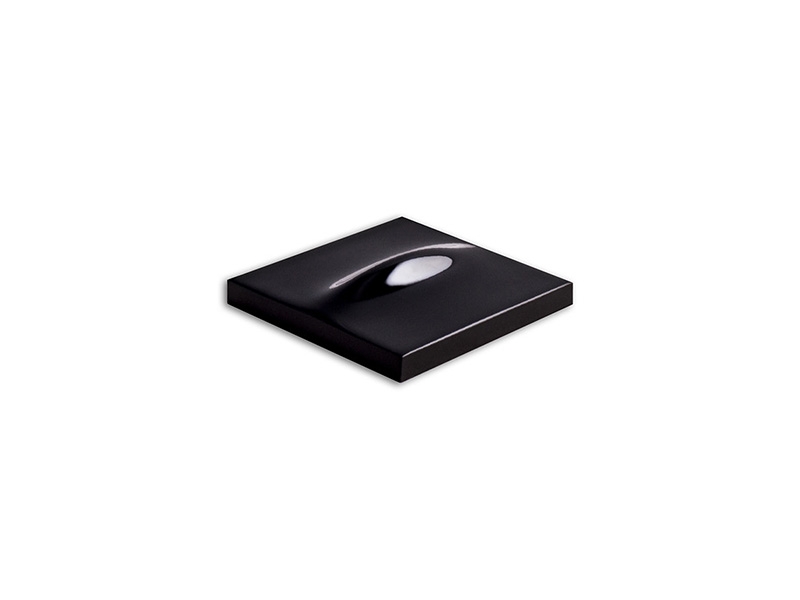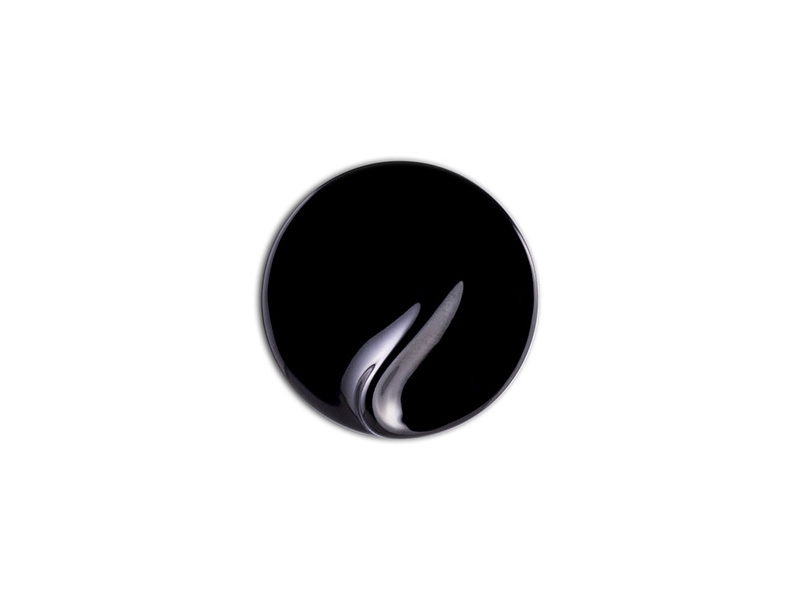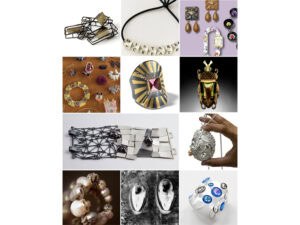
When we talk about taboo issues, normally there is a predominant way to approach them. That means that the ways of representing these themes tend to be quite homogeneous. Feminine desire, enjoyment, and pleasure are not exempt from this. Everything that makes the female sexual universe, marked by pleasure, is often treated as a lack. Lack of a phallus, of another, lack which accounts for incompleteness. There is a particular way of talking about this feminine enjoyment that is almost always seen as a duality and doesn’t see feminine pleasure as something for itself. If we think of the ways in which art and jewelry treat pleasure and desire, we’ll probably find that most of the time the female body is treated as an object of desire. And that means that the way others see it is almost as important as the piece itself. The object is completed when it is indeed the desire of another.
“My darling was naked / and knowing my heart well / She was wearing only her sonorous jewels / whose opulent display made her look triumphant / Like Moorish concubines on their fortune days.”[1]
This text by Baudelaire, called The Jewels, is a clear example of the functioning of jewelry as a sign of desire. These jewels are in representation of something very clear—sexual desire—but they don’t foreground the sexual desire of his beloved but rather that of Baudelaire. A triad is then composed by the object that embodies the pleasure, but that in turn needs another who sees and recognizes the situation. The jewel, then, when playing with the idea of sexual enjoyment, usually does so by composing a dialogue between three elements: the body, the jewel, and another who is seduced (which can be visible or invisible).

But we’re going through an era where these discourses begin to disarm, and desire is no longer marked by complementary dualities. Neither femininity nor masculinity is one way, however it isn’t the only one. Within this boiling social and cultural panorama it’s possible to find ourselves with diverse artistic manifestations that give account of these epochal marks. And the field of jewelry is often a very interesting space of reflection, especially because the body plays a fundamental role.
Barbara D’Ambra and Constanza Sorella are two Argentine jewelers/artists/designers whose collections of jewelry pieces give an extremely attractive twist to representing pleasure and enjoyment. The work of both approaches a world that thematizes desire and eroticism without the need to fall into binarisms or account for a lack. Their pieces are sensual, and even humorous, and break with the predictabilities about how to deal with these issues.

Insinuazioni is the collection by Barbara D’Ambra, who was selected at Schmuck two consecutive years. It consists of a series of black and white pieces made of resin that, just as the name says, insinuate various erotic touches. This insinuation is composed of a very subtle movement, which generates the sensation of understanding what we are looking at, while remaining in the plane of allusion. The work plays then with the abstraction testing its limits. Is it possible to abrade and deform an object while still meaning what the artist wants?
The pieces are diverse geometric shapes, (circles, rectangles, and squares) in front of which various organic volumes unfold, inviting to be stroked by the fingers. What seems to be a natural element, the product of a contingency, is actually something extremely calculated.

This calculated game with the volumes, swollen/sunken, can be read as a reversal of the characteristic morphologies of various erogenous zones of the human body. I would like to draw a parallel between D’Ambra’s insinuating morphologies and a text by Bourdieu called Male Domination. The essay revolves around the settlers of the Kabylie and analyzes the social construction of sexuality, which finds its realization in eroticism. There he works with the different ways of naming and metaphorizing everything that is related to that sexual universe and the study of all the words that account for the different morphologies and their associations. For example, all that refers to the bloated are symbols linked to femininity, because they represent different manifestations of vital fullness. When D’Ambra works with rounded volumes, they can be read as feminized attributes precisely because we share that symbolic universe. The thing changes radically when we read those volumes together with their color (although one aspect is not indivisible from another); the white is usually associated with the pure, while the black points to the feminine because it is equated to the secret and the magical field.

So when her brooches, those that emulate a vagina, are white, they exchange that symbology that is set up around color and shape. In turn, according to Bourdieu, the vagina “owes its fatal and evil character to the fact that it is thought of as an empty space, but also as an inversion of the phallus,”[2] and D’Ambra creates a complete object—it is a full surface on which certain volumes rise and precisely because of this it does not constitute any emptiness. The set then between volume, color, and fullness causes the object to continue being an abstraction of the feminine genitality, but without requiring the phallus to be read as such.
Her volumes are a success insofar as they are proposed; she attempts to define “insinuating” as the possibility of penetrating a narrow space. Beyond the clear sexual connotation, her pieces imply that one can penetrate them, when the truth is that one cannot, or at least not entirely. Those that are full are really impossible to penetrate more than the surface allows. That’s why I said earlier that it’s a calculated move, because it simulates something that is really impossible, and the power and success of the pieces lies in that simulated game where we have less freedom than we actually thought.
Her pieces close in on themselves, and they don’t need us to be complete. But they do invite us to go through them, to enjoy their surface and have a sensual experience.

Constanza Sorella creates pieces, made principally of hair, that have no specific use. The series is composed of brooches and hand objects, and all of them play with brown and straight hair reminiscent of the artist’s own. But that’s not all; during photo shoots, she places those objects, especially the brooches, on the erogenous zones.
What does it mean to have hair hanging from a chest or from the pubic area? Or rather, what does it mean to have hair hanging from any other part of the body where hair is not normally visible? And above all, what implications come from that hair simulating the author’s?
With an intrinsic humor, Sorella’s work dislocates the notion of what should and should not be shown of the body. The use of hair, and that specific hair, brings us closer to a fetish universe. And the interesting thing is that seen from the perspective of the fetish, the tricofilia—the pleasure caused by the hair—is extremely innocent. But it still generates a shock effect to see the hair hanging in those areas of the body.

The pieces create the feeling that Rapunzel has suddenly decided to show her masochistic side, so she has let down the beautiful hair in her pubic zone. And from the other point of view, they also create the feeling that suddenly a go-go girl decided to generate repulsion or rejection by adding hair to her typical nipple tassels. So basically, the idea that sexuality is something pure or impure, that it is serious and that enjoyment is denied of humoristic characteristics, is totally destroyed here. The pieces do not stop being sensual, because they explicitly want to be touched. Enjoying the sensation of that hair and—depending on the location of the piece—the act of touching them can be something innocent or not.
Like D’Ambra’s work, these pieces are not some empty space; they do not need another thing to complete them. Both artists can be compared at this point; they work with the notions of eroticism and enjoyment in a way that is pretty original, that settles the need of the other and does not fall into the notion of desire object. These are pieces that offer themselves as something like an equal, so we can enjoy them as a partner and not as a dominated being.
But that dislocation also generates a certain violence, because the disruptions are essentially violent. Here the function of the jewelry can be similar to literature; as Deleuze said, “with Sade and with Masoch literature serves to name, not the world because that is already done, but a sort of double of the world, capable of collecting its violence and its excess. It is said that what an excitement has of excessiveness is in a certain way eroticized. Hence the aptitude of eroticism to serve as a mirror to the world, to reflect its excesses, to extract its violence and ‘spiritualize them,’ and this is all the better because it puts them at the service of meaning.’’[3]

So we can affirm that this kind of work (and I bet there are a lot of similar pieces around the world) could be considered as a reflection of this time, where the discourse of sexuality is being constantly rethought and others approaches are appearing. The work calls us to reflect on how we approach jewelry, what uses we make of it, what things we think should or should not hang on the body, and how we can play with them. Maybe sometimes this may seem a bit violent, maybe it will generate rejection, or it might generate admiration. But one of the most fascinating performances of contemporary jewelry is its ability to reflect on itself and on the world in which we live. Welcome, then, to all these pieces. There is nothing left but to enjoy them!




